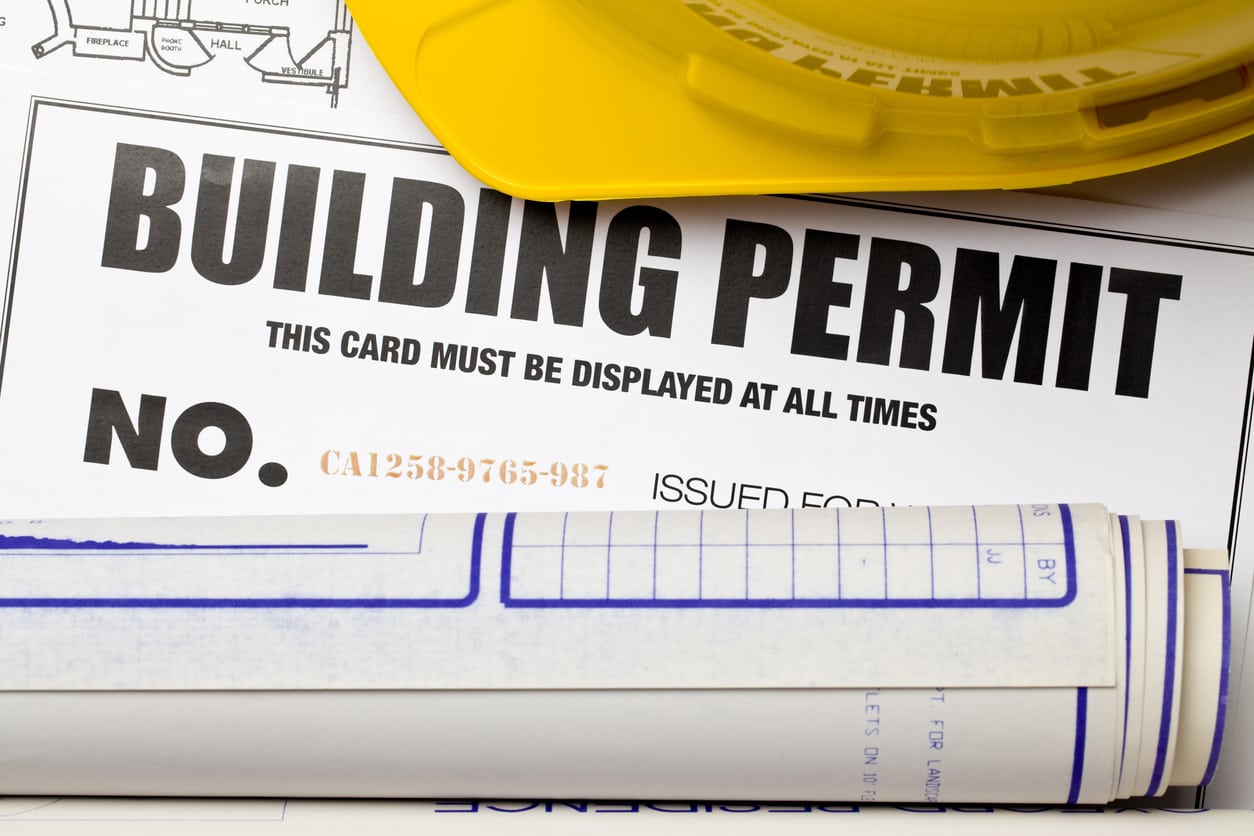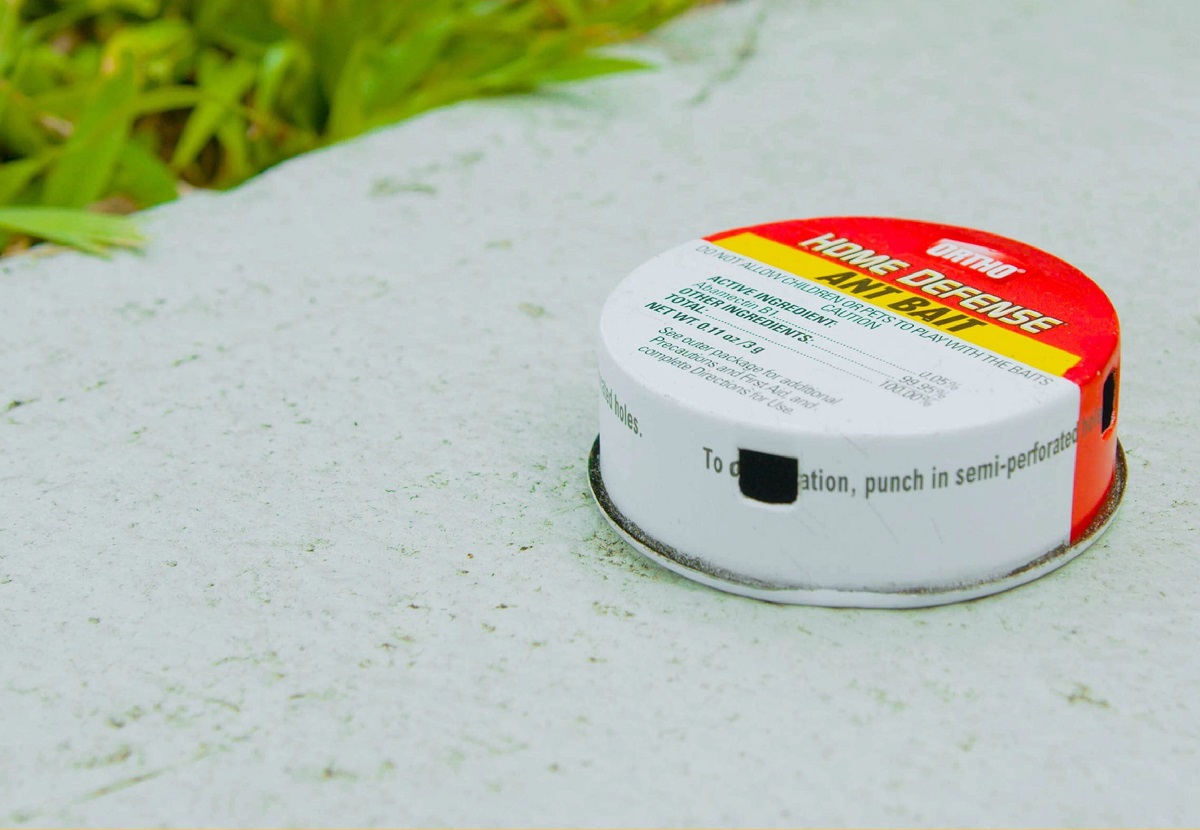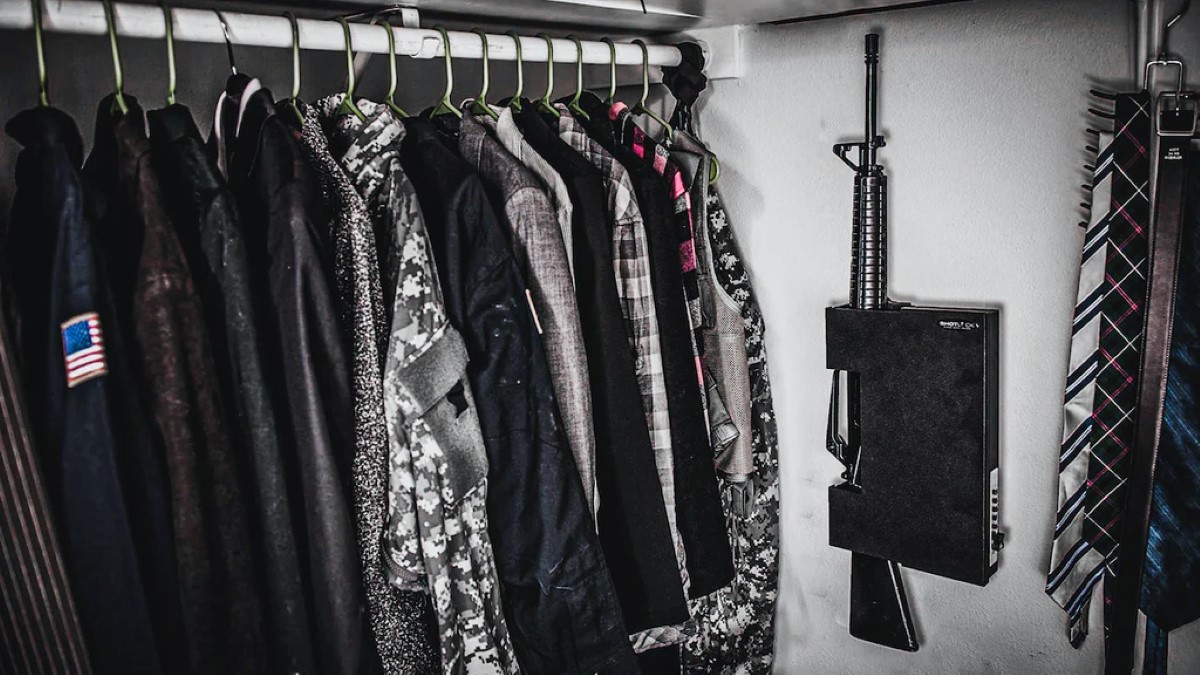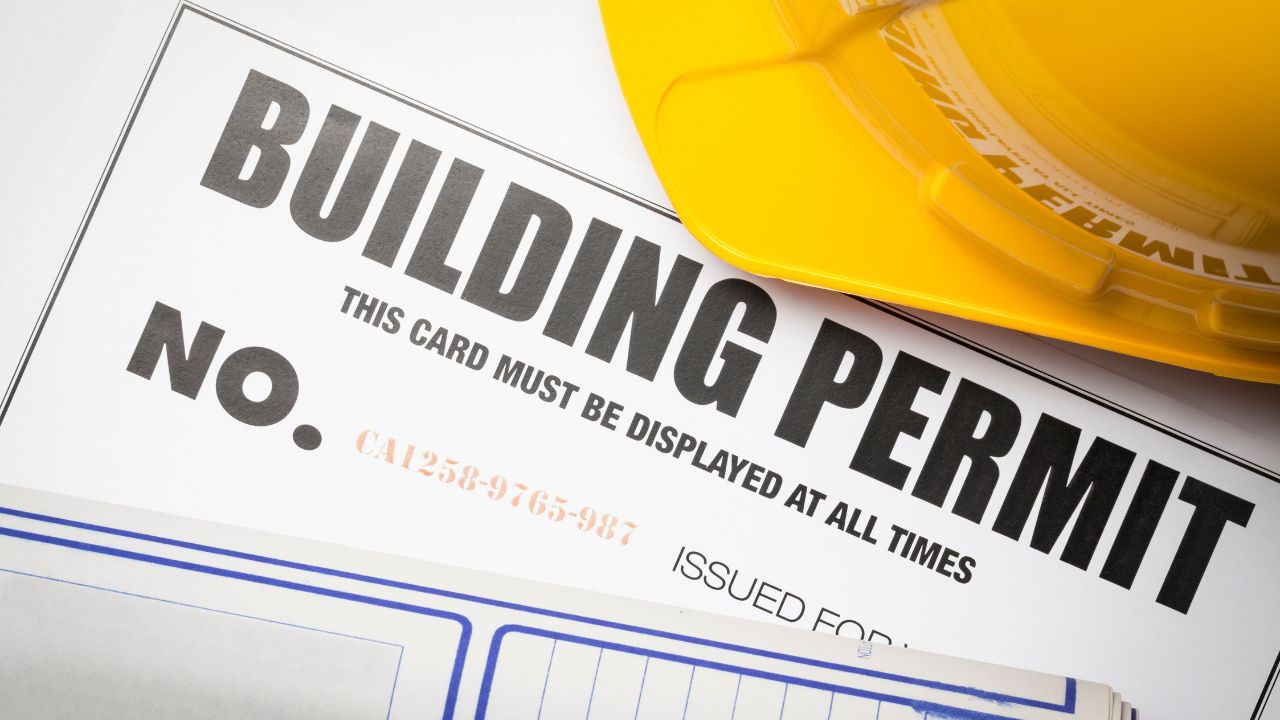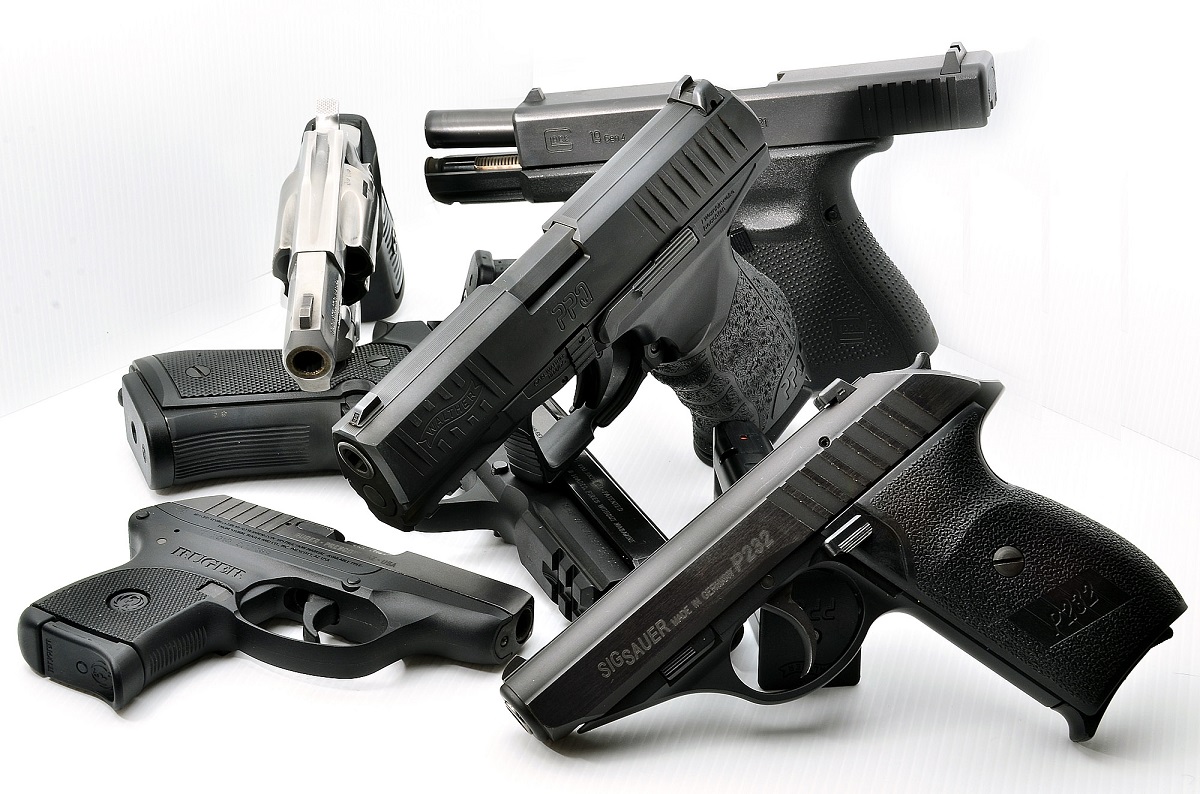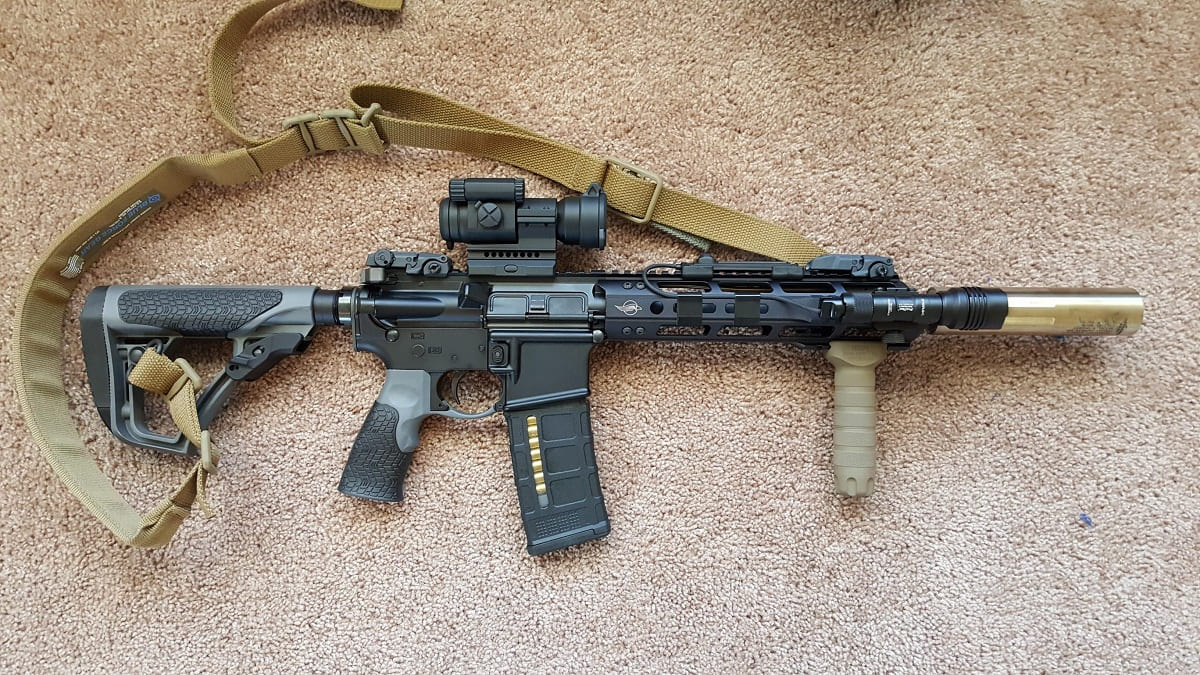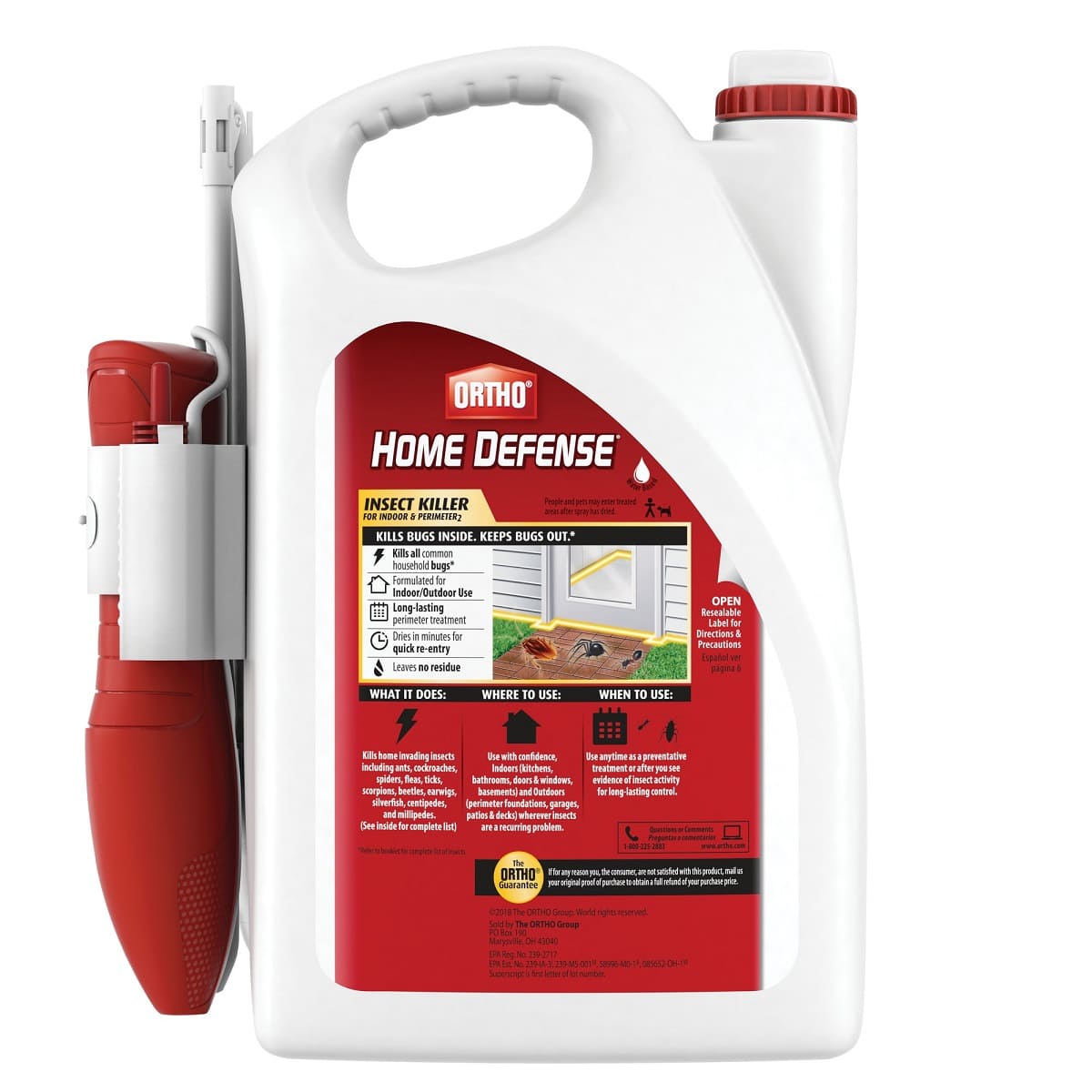Home>Home Security and Surveillance>How To Get Firearm Permit For Home Defense
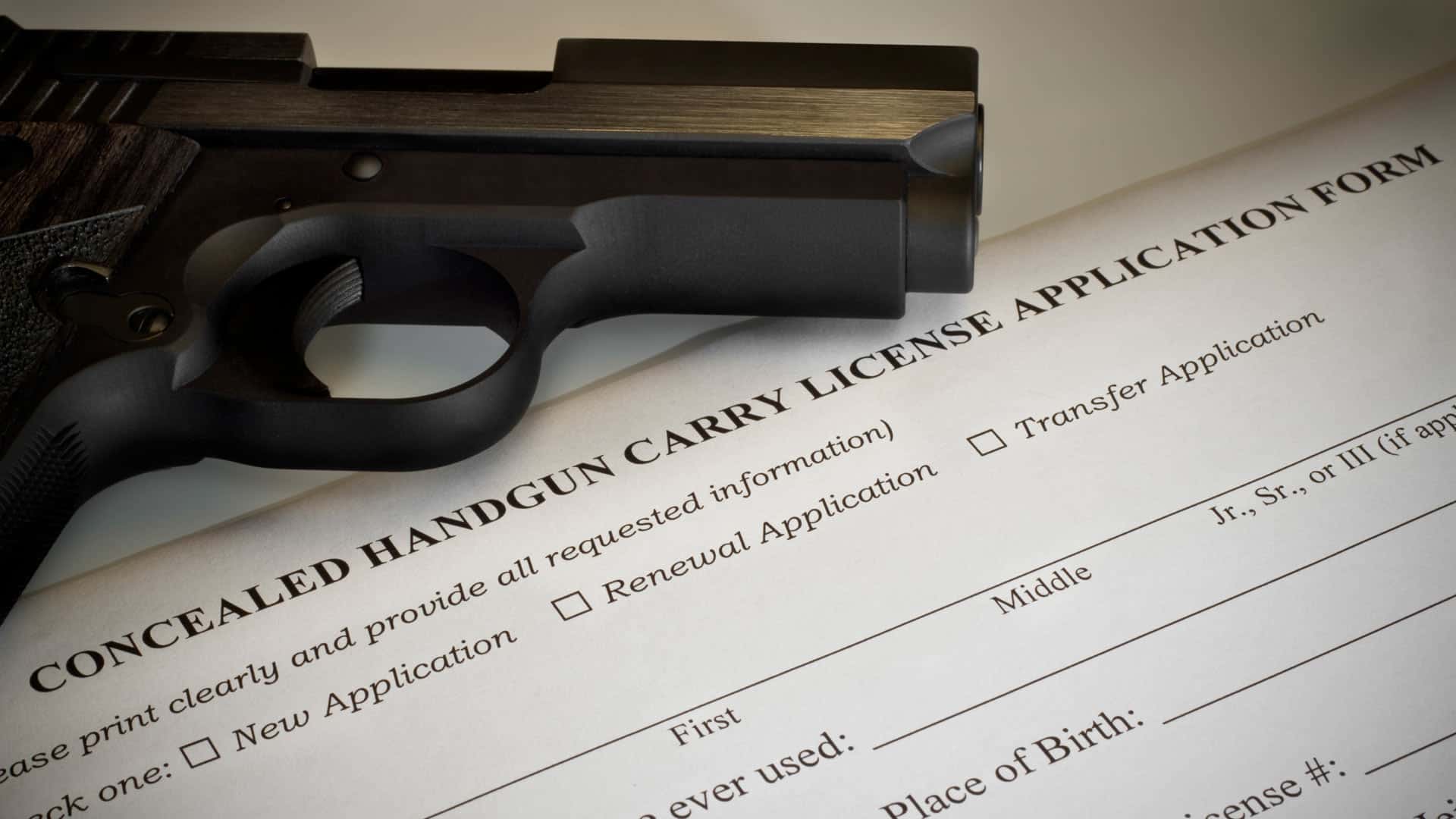

Home Security and Surveillance
How To Get Firearm Permit For Home Defense
Modified: March 6, 2024
Learn how to obtain a firearm permit for home defense and enhance your home security and surveillance. Ensure your family's safety with expert guidance and tips.
(Many of the links in this article redirect to a specific reviewed product. Your purchase of these products through affiliate links helps to generate commission for Storables.com, at no extra cost. Learn more)
Introduction
Welcome to the world of home security and surveillance, where the safety of your loved ones and your valuable possessions is of utmost importance. In today’s uncertain times, it’s crucial to take proactive measures to protect your home and ensure peace of mind. One of the most effective ways to do this is by obtaining a firearm permit for home defense.
A firearm permit allows you to legally possess and use a firearm for self-defense within the confines of your home. However, it’s essential to understand that the regulations and requirements for obtaining a firearm permit may vary from state to state. This comprehensive guide will provide you with all the necessary information and steps to obtain a firearm permit specifically tailored to your state’s laws.
Before diving into the details, it’s important to note that owning a firearm and obtaining a permit comes with great responsibility. It’s crucial to prioritize safety at all times and ensure that only trained individuals have access to the firearm. Additionally, using a firearm should always be a last resort in situations where there is an immediate threat to life and property.
Now, let’s delve into the process of obtaining a firearm permit for home defense.
Key Takeaways:
- Obtaining a firearm permit for home defense requires understanding state-specific laws, thorough training, and responsible ownership to ensure safety and legal compliance.
- Prioritizing home security and firearm safety is crucial. It involves developing a security plan, proper firearm handling, and strategic home defense strategies to protect loved ones and property.
Read more: How To Get A Permit For Home Improvement
Understanding Firearm Permit Requirements
Before applying for a firearm permit, it’s crucial to familiarize yourself with the specific requirements set by your state. These requirements may vary in terms of age restrictions, residency, background checks, training, and other factors. Here are some common factors to consider:
- Age Restrictions: Different states have different age requirements for obtaining a firearm permit. In most cases, you must be at least 21 years old to apply for a permit. However, some states may allow individuals as young as 18 to apply, but with certain limitations.
- Residency: Typically, you must be a legal resident of the state in which you are applying for a firearm permit. This means having a valid driver’s license or state ID card as proof of residency.
- Background Checks: Background checks are a crucial part of the firearm permit application process. They involve a thorough review of your criminal history, mental health records, and other relevant information. This ensures that individuals with a history of violent offenses or mental health issues are not granted a firearm permit.
- Training Requirements: Many states require applicants to complete a firearms training course. This course includes instruction on firearm safety, handling, and the legal responsibilities of owning a firearm. The training may be conducted by certified instructors or law enforcement agencies.
- Restrictions for Convicted Felons: Individuals with a felony conviction may be disqualified from obtaining a firearm permit. Each state has specific regulations regarding the restoration of firearm rights for felons, so it’s essential to understand the laws in your state.
- Prohibited Persons: Certain individuals, such as those with restraining orders, domestic violence offenses, or a history of drug abuse, may be prohibited from obtaining a firearm permit.
It’s important to note that while these are common requirements, each state has its own unique set of regulations. You must thoroughly research and understand the specific requirements in your state to ensure a smooth application process.
Now that you have a clear understanding of the basic requirements for obtaining a firearm permit, let’s move on to the next step: researching state-specific laws and regulations.
Researching State-Specific Laws and Regulations
Once you have a good understanding of the general requirements for obtaining a firearm permit, it’s crucial to dive deeper into the specific laws and regulations of your state. Each state has its own set of statutes governing firearm ownership, permits, and self-defense laws. Here’s how to conduct thorough research:
- Visit Official Government Websites: Start by visiting the official website of your state’s government. Look for the section dedicated to firearms, permits, or public safety. There, you should be able to find detailed information about the specific laws and regulations pertaining to firearm permits.
- Consult State-Specific Firearm Associations: State-specific firearm associations can be a valuable resource for understanding the intricacies of your state’s firearm laws. These organizations often provide accurate and up-to-date information, as well as resources for legal assistance and training.
- Seek Legal Advice if Needed: If you are unsure about any aspect of your state’s laws and regulations, it’s wise to consult with a legal professional specializing in firearms law. They can provide expert guidance and ensure that you fully comply with all applicable rules.
- Research Concealed Carry Laws: In addition to firearm permits for home defense, you may also want to familiarize yourself with the concealed carry laws in your state. These laws define when and how you can carry a concealed firearm outside of your home.
It’s crucial to remember that laws and regulations can change over time. Therefore, it’s essential to stay up-to-date with any amendments or new legislation that might impact your firearm permit. Regularly check official government websites and stay informed about any relevant news or updates.
By conducting thorough research into your state’s specific laws and regulations, you will gain a solid understanding of what is required to obtain a firearm permit. Armed with this knowledge, you can confidently move forward with the application process, which we will discuss in the next section.
Applying for a Firearm Permit
Once you have familiarized yourself with the firearm permit requirements and researched the state-specific laws, it’s time to begin the application process. Here are the general steps involved in applying for a firearm permit:
- Obtain the Application Form: Contact your local law enforcement agency or visit their website to obtain the firearm permit application form. In some states, the application may be available online for easy access.
- Read and Understand the Instructions: Take the time to carefully read and understand the instructions provided with the application form. Pay attention to any specific requirements, documentation needs, or additional steps that need to be followed.
- Fill Out the Application Form: Fill out the application form accurately and completely. Double-check all the information before submitting it. Provide all the necessary personal details, including your full name, address, contact information, and any required identification or reference numbers.
- Submit the Required Documents: Along with the application form, you may need to submit certain supporting documents. This can include proof of residency, valid identification, completed background check forms, passport-sized photographs, proof of training or certification, and any other documentation specified by your state.
- Pay the Application Fee: Most firearm permit applications require a fee. Make sure to include the appropriate payment method along with the application. The fee amount will vary from state to state, so check your state’s guidelines for the correct amount.
- Review and Double-Check: Before submitting the application, review all the information provided and ensure its accuracy. Any errors or omissions could lead to delays or rejections.
- Submit the Application: Once you have completed the application form, attached the necessary documents, and paid the fee, submit the application to your local law enforcement agency. Follow their specific submission instructions, whether it’s in person, by mail, or online.
It’s important to keep in mind that the application process may vary depending on your state’s requirements. Some states may have additional steps or forms to complete, while others may have a more streamlined process. Consult your state’s official guidelines or contact your local law enforcement agency for any specific requirements.
Now that you have successfully submitted your firearm permit application, the next step is to wait for the processing period. We will explore this in detail in the next section.
Completing the Required Training and Background Checks
As part of the firearm permit application process, you will likely be required to complete certain training courses and undergo background checks. These steps are crucial in ensuring your eligibility and demonstrating your commitment to responsible firearm ownership. Let’s take a closer look at each of these requirements:
Training Courses:
Many states mandate that applicants complete a firearms training course before obtaining a firearm permit. The purpose of these courses is to educate individuals on proper firearm safety, handling, and the legal responsibilities associated with owning a firearm. The training courses are typically conducted by certified instructors or law enforcement agencies.
These courses cover a range of topics, including firearm mechanics, safe storage practices, marksmanship skills, situational awareness, and legal considerations. The duration and content of the courses may vary depending on your state’s requirements.
It’s important to research and enroll in a recognized and approved firearms training course in your state. Ensure that the instructors are certified and have a good reputation. By completing the required training, you not only gain vital knowledge and skills but also demonstrate your commitment to responsible firearm ownership.
Background Checks:
Background checks play a critical role in the firearm permit application process. These checks are conducted to verify your personal and criminal history, as well as to ensure that you do not have any disqualifying factors that would prevent you from owning a firearm.
The background check process typically involves submitting fingerprints, which are used to check various databases, including local, state, and federal law enforcement records. These checks aim to identify any criminal convictions, restraining orders, or other factors that might disqualify you from obtaining a firearm permit.
Additionally, the background check process may also involve a mental health evaluation. This evaluation assesses your mental fitness to responsibly possess and use a firearm. It is crucial to be open and honest during this evaluation to ensure accurate assessment and compliance with the law.
It’s important to note that the background check process might take some time, depending on the volume of applications and the complexity of your background. There may be a waiting period involved as the authorities thoroughly review your information.
By completing the required training courses and undergoing background checks, you demonstrate your commitment to safety, responsibility, and compliance with the law. Once you have successfully completed these steps, you can proceed with collecting the supporting documents for your firearm permit application, which we will discuss in the next section.
Read more: How To Get A City Permit For Construction
Collecting Supporting Documents for the Application
When applying for a firearm permit, you will typically be required to provide various supporting documents along with your application. These documents serve to verify your identity, residency, and compliance with the necessary requirements. Here are some common supporting documents that you may need to collect:
Proof of Residency:
You will likely need to provide documentation that proves your residency in the state where you are applying for the firearm permit. This can include a valid driver’s license or state identification card with your current address. Other accepted documents may include utility bills, lease agreements, or mortgage statements with your name and address clearly displayed.
Identification Documents:
In addition to proof of residency, you will need to provide valid identification documents, such as a government-issued identification card, passport, or birth certificate. These documents are necessary to verify your identity and ensure that you are eligible for a firearm permit.
Passport-Sized Photographs:
Some states may require passport-sized photographs to be submitted with your application. The specifications for these photographs may vary, so it’s important to read the instructions carefully to ensure compliance. Generally, these photographs should be recent, clear, and taken against a plain background.
Completed Background Check Forms:
To facilitate the background check process, you may need to complete specific forms provided by your local law enforcement agency. These forms usually require you to provide personal details and consent to the background check. Make sure to fill out these forms accurately and honestly.
Proof of Training or Certification:
If you have completed any required firearms training courses, you will need to provide proof of completion. This can include certificates, training course transcripts, or any other documentation provided by the certified instructor or training facility.
It’s important to carefully review the application instructions and requirements set by your state to ensure that you have all the necessary supporting documents. Missing or inadequate documentation can lead to delays or rejection of your application. If you have any doubts or questions, consider reaching out to your local law enforcement agency for clarification.
With the supporting documents in hand, you are now ready to move on to the next step: submitting the firearm permit application. We will explore this process in detail in the following section.
When applying for a firearm permit for home defense, make sure to familiarize yourself with your state’s specific laws and regulations regarding the application process. This may include completing a firearms safety course and submitting to a background check.
Submitting the Firearm Permit Application
Once you have gathered all the required supporting documents and completed the necessary forms, it’s time to submit your firearm permit application. The process for submitting the application may vary depending on your state, but here are some general guidelines to follow:
- Review the Application: Before submitting your application, carefully review all the information provided. Check for any errors or missing details that could cause delays or rejection.
- Make Copies: It’s always a good idea to make copies of your completed application and supporting documents for your records. These copies can serve as a reference and proof of submission.
- Submit In-Person or Online: Follow the specific instructions provided by your state or local law enforcement agency on how to submit the application. Some states may require you to submit the application in person, while others might offer online submission options.
- Pay the Application Fee: Ensure that you include the appropriate payment method for the application fee, as specified by your state. This fee helps cover the administrative costs associated with processing the permit.
- Obtain a Receipt: If submitting your application in person, make sure to request a receipt or acknowledgment that your application has been received. This receipt can serve as proof of submission and may be required if any issues or inquiries arise during the processing period.
It’s important to note that once you have submitted your application, there may be a waiting period before you receive a response. The processing time can vary depending on the volume of applications and the complexity of the background checks involved. Be prepared for this waiting period and avoid making any inquiries or follow-ups unless explicitly instructed by the authorities.
During this waiting period, it’s essential to refrain from purchasing or possessing firearms until you have received the official firearm permit. Engaging in any unauthorized firearm activities can have serious legal consequences and potentially jeopardize your chances of obtaining a permit.
Now that your firearm permit application has been submitted, it’s time to remain patient and wait for the processing period to unfold. In the next section, we will discuss what to expect during this period and what happens once you receive your firearm permit.
Waiting Period and Processing Time
Once you have submitted your firearm permit application, the next step in the process is to patiently wait for the application to be reviewed and processed. The waiting period and processing time can vary depending on various factors including the volume of applications, the efficiency of the law enforcement agency, and the complexity of background checks involved. Here’s what you can expect during this period:
Waiting Period:
Many states have a mandatory waiting period before a firearm permit can be issued. This waiting period allows sufficient time for the authorities to conduct the necessary background checks and perform a thorough evaluation of your application. The duration of the waiting period may range from a few days to several weeks, depending on your state’s regulations.
It’s important to note that the waiting period is intended to ensure thorough vetting and to provide ample time for any potential issues or concerns to surface. While waiting, it’s essential to remain patient and refrain from engaging in any unauthorized or unlawful firearm activities.
Processing Time:
The processing time refers to the duration it takes for your firearm permit application to be reviewed, evaluated, and a decision to be made. This process typically involves conducting extensive background checks, verifying the information provided in the application, and ensuring compliance with all relevant laws and regulations.
The processing time can vary significantly depending on several factors, including the workload of the law enforcement agency, any backlog of applications, and the complexity of the background checks involved. It’s essential to understand that the authorities prioritize accuracy and comprehensiveness over speed to ensure the safety and security of the community.
While waiting for the processing to be completed, it’s crucial to refrain from contacting the authorities for follow-ups unless explicitly instructed to do so. Frequent inquiries can further delay the process and may not yield any additional information or updates.
Once the processing has been completed, you will be notified of the decision regarding your firearm permit application. If approved, you will receive your firearm permit, allowing you to legally possess and use a firearm for home defense within the limits set by the law.
In case your application is denied, you may receive a detailed explanation outlining the reasons for the denial. It’s important to carefully review this information and seek legal advice if you wish to pursue any further actions or appeals.
With a clear understanding of the waiting period and processing time, you can patiently await the decision on your firearm permit application. In the next section, we will delve into the significance of obtaining a firearm safety training and handling certification.
Receiving the Firearm Permit
After patiently waiting for the processing period, you will receive a decision on your firearm permit application. If your application is approved, you will be issued a firearm permit, granting you the legal authority to possess and use a firearm for home defense. Here’s what you can expect after receiving the permit:
Notification:
Once your firearm permit application has been approved, you will be notified by the issuing authority. This notification will typically come in the form of a letter or an official document stating that your permit has been granted. It may also include information on any restrictions or limitations that may apply to your permit.
Firearm Permit Documentation:
Upon receiving notification of approval, you will be provided with the necessary documentation for your firearm permit. This may include a physical permit card or a digital copy that you can keep with you at all times when possessing or carrying a firearm. It’s important to familiarize yourself with the permit’s terms and conditions and carry it with you whenever you have the firearm in your possession.
Understanding Permit Restrictions:
It’s crucial to carefully review the terms and conditions of your firearm permit, including any restrictions or limitations that may apply. These restrictions could include specific locations where firearms are prohibited, certain types of firearms that are restricted, or specific regulations for carrying a concealed firearm outside of your home. By understanding and adhering to these restrictions, you ensure that you are using the firearm within the boundaries of the law.
Renewal and Recertification:
Firearm permits are typically issued for a specific duration, which can vary depending on your state’s regulations. Before your permit expires, you will need to initiate the renewal process as per the instructions provided by your state or local law enforcement agency. The renewal process may involve updating your information, completing any necessary forms, and paying the renewal fee. It’s important to stay aware of the expiration date of your permit and initiate the renewal process well in advance to ensure continuous legality in owning and using a firearm for home defense.
Responsibility and Continued Training:
Obtaining a firearm permit comes with a great deal of responsibility. It’s crucial to remember that owning and using a firearm requires ongoing education, training, and a commitment to safety. Keep in mind that responsible firearm ownership involves regular practice, adhering to safe storage practices, keeping firearms out of the reach of unauthorized individuals, and understanding the legal nuances of self-defense laws in your state.
By understanding and following the regulations, restrictions, and obligations outlined in your firearm permit, you can ensure that you are using your firearm safely and responsibly.
Congratulations on receiving your firearm permit! With the legal authority to possess and use a firearm for home defense, you can further enhance the security of your loved ones and your property. Remember to always prioritize safety, follow the law, and seek ongoing training and education to be a responsible firearm owner.
Read more: How To Get Construction Permit
Firearm Safety Training and Handling
Obtaining a firearm permit is just the first step in responsible firearm ownership. To ensure the safety of yourself and those around you, it is imperative to receive proper firearm safety training and become proficient in handling firearms. Here are some key aspects of firearm safety training:
Find a Certified Instructor:
Start by seeking out a certified firearms instructor or a reputable firearms training facility in your area. Look for instructors who have the necessary qualifications, experience, and a strong emphasis on safety. They should be knowledgeable in firearm laws, handling techniques, and situational awareness.
Firearm Safety Basics:
A comprehensive training course will cover the basics of firearm safety, including fundamental handling techniques, proper storage, and safe firearm manipulation. Topics often include the principles of firearm operation, safe loading and unloading procedures, as well as the importance of muzzle control and trigger discipline.
Legal Responsibilities:
Understanding the legal aspects of firearm ownership is crucial. Your training should cover self-defense laws, including when and where you can legally use your firearm for home defense. Familiarize yourself with the specific laws and regulations in your state so that you can make informed decisions pertaining to firearm usage.
Situational Awareness and Decision Making:
Firearm safety training should also encompass situational awareness and decision-making skills. This involves learning how to assess potential threats, identifying when using a firearm is appropriate, and understanding how to de-escalate conflicts whenever possible. The goal is to develop a well-rounded approach to personal safety and to use a firearm as a last resort when faced with an immediate threat to life and property.
Continued Training and Practice:
Firearm safety is an ongoing commitment. It is crucial to continue training and practicing regularly to maintain proficiency and stay up to date with the latest safety protocols. Attend refresher courses or advanced training sessions to sharpen your skills and reinforce safe firearm handling habits. Regular practice at the shooting range helps ensure that you are comfortable and accurate when handling your firearm.
Safe Storage:
One of the most important aspects of firearm safety is proper storage. Ensure that you have a secure storage solution, such as a designated gun safe or lockbox, to prevent unauthorized access. Teach your family members about firearm safety and instill in them the importance of never touching or handling a firearm without adult supervision.
Seek Additional Resources:
There are numerous resources available to enhance your knowledge of firearm safety and responsible ownership. Explore books, online courses, and community programs that provide valuable insights and guidance in firearm safety practices.
Remember, firearm safety is a continuous process that requires ongoing education and practice. By investing the time and effort into proper training and adhering to safety protocols, you can confidently and responsibly exercise your rights as a firearm owner while prioritizing the well-being and security of yourself and those around you.
Home Defense Strategies with a Firearm
Having a firearm for home defense can be a significant asset in protecting yourself, your loved ones, and your property. However, it’s crucial to have a well-thought-out plan and employ strategic approaches to ensure maximum effectiveness and safety. Here are some key strategies for utilizing a firearm in home defense:
1. Develop a Home Security Plan:
Prioritize overall home security by implementing measures such as sturdy doors and windows, adequate outdoor lighting, and a reliable alarm system. A strong security foundation is essential before relying on a firearm as the final line of defense.
2. Proper Firearm Placement and Accessibility:
Keep your firearm in a secure yet easily accessible location within your home. Consider using a quick-access safe or lockbox specifically designed for home defense firearms. Ensure that all authorized users are familiar with the safe’s access mechanism and practice retrieving the firearm swiftly and safely.
3. Engage in Situational Awareness:
Develop a habit of staying vigilant and aware of your surroundings. Regularly assess potential threats and unusual activities in and around your home. This heightened awareness allows for early detection and the opportunity to enact appropriate defensive measures if necessary.
4. Use Clear Communication:
In the event of a home intrusion, communication with family members is vital. Make sure everyone knows the designated safe areas in the house and understands the importance of clear and concise communication to avoid any confusion or accidental injuries during challenging situations.
5. Plan for Different Scenarios:
Consider various scenarios and formulate a plan of action for each. Practice different scenarios and rehearse the plan with your family members beforehand. This preparation helps reduce panic and ensures a higher level of efficiency and coordination during an actual emergency.
6. Identify Safe Zones:
Designate specific safe zones within your home where family members can seek refuge in the event of an intrusion. These safe zones should have solid doors, minimal entry points, and access to communication devices. Establish a clear protocol for reaching these safe zones quickly, if necessary.
7. Maintain Effective Communication with Law Enforcement:
In the event of a home intrusion, immediately contact emergency services and provide them with accurate information about the situation. Stay on the line with the dispatcher, follow their instructions, and provide updates as needed while also ensuring your own safety.
8. Practice Firearm Safety at all Times:
Even in intense situations, never compromise on firearm safety. Keep your finger off the trigger until ready to shoot, know your target and what lies beyond it, and be mindful of others in your vicinity. Regularly practice safe firearm handling techniques and participate in ongoing training courses to reinforce responsible firearm use.
9. Cooperate with Law Enforcement:
If law enforcement responds to a home defense situation, follow their commands and identify yourself as a legal firearms owner. Keep your hands visible, avoid sudden movements, and communicate clearly with the officers to ensure a safe resolution.
10. Seek Legal Advice:
Understanding the self-defense laws in your state is crucial. If you ever need to use your firearm in self-defense, it’s essential to cooperate with law enforcement and consult with legal professionals to ensure that your actions remain within the boundaries of the law.
Remember, firearm use for home defense should always be a last resort after all other options for personal safety have been exhausted. By combining proper home security practices, situational awareness, and strategic planning, you can effectively utilize a firearm to protect your home and loved ones while prioritizing safety and the law.
Conclusion
Home security and personal safety are paramount in today’s world, and having a firearm permit for home defense can provide an added layer of protection. However, obtaining a firearm permit is not a decision to be taken lightly. It comes with great responsibility and the need for proper training and understanding of the laws in your state.
Throughout this guide, we have explored the process of obtaining a firearm permit, from understanding the requirements to submitting the application and receiving the permit. We have also emphasized the importance of firearm safety training, responsible handling, and employing effective home defense strategies.
Remember that firearm ownership is accompanied by legal and moral obligations. By striving for a balance between personal security and responsible firearm ownership, you can ensure the safety of yourself, your loved ones, and your home while adhering to the laws and regulations of your state.
Always prioritize safety above all else. This includes storing your firearm securely, keeping it out of reach of unauthorized individuals, and practicing safe handling techniques. Regular training and practice will help maintain proficiency and ensure the safe and effective use of your firearm should the need arise.
Additionally, it is essential to stay updated on any changes or updates to the laws and regulations pertaining to firearm ownership and permits in your state. Being aware of these changes will help you remain in compliance and make informed decisions regarding your firearm permit.
Lastly, remember that a firearm should only be used as a last resort in situations where there is an immediate threat to life and property. Exploring non-lethal self-defense options and de-escalation techniques should always be prioritized whenever possible.
By following these guidelines and embracing a responsible and informed approach to firearm ownership, you can enjoy peace of mind, knowing that you are prepared to protect yourself and your loved ones should the need arise.
Always prioritize safety, follow the law, and continually educate yourself to be a responsible firearm owner. Stay vigilant, stay secure, and may your home be a sanctuary of safety and peace.
Frequently Asked Questions about How To Get Firearm Permit For Home Defense
Was this page helpful?
At Storables.com, we guarantee accurate and reliable information. Our content, validated by Expert Board Contributors, is crafted following stringent Editorial Policies. We're committed to providing you with well-researched, expert-backed insights for all your informational needs.
